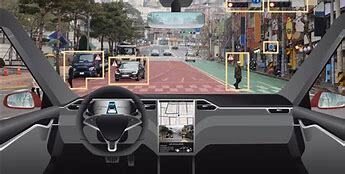ROLE OF IOT IN AUTOMOBILE

This term “Automotive IoT” refers to the integration of such components as sensors, gadgets, clouds, and apps into vehicles and their use as a complex system for predictive maintenance, connection of cars, fleet management, etc. Embedded IoT solutions have transformed cars into a “near-artificial intelligence.” The Internet of Things allows manufacturers to implement a lot of innovations in the industry, with one which is on everyone’s lips now — self-driving cars. It is a vast platform for the extension of IT possibilities.
To get a real picture of automotive IoT perspectives, imagine that you will come out of the house one day and your car is already summoned from the garage to the driveway as it knows that according to your calendar you have a ride for today. On your way, a car will stream some podcasts chosen according to your preferences. On arriving, it will drop you off and find a parking lot, by itself. After getting things done, you will summon your car to where you are standing only with one click on the smartphone and drive back home.
It can sound a little bit futuristic, but it is closer than you can imagine. All of this will become possible due to the further development of the Internet of Things in the automotive industry which is already actively embedded in vehicles and whose endpoints by the end of 2020 amounted to 470 million with global revenue of $389 billion. And the tendency is proven to have a brisk growth, as the analysts expect the automotive IoT market to reach $541.73 billion at a CAGR of 16.4% by 2025.
The first huge step of the Internet of Things for cars was the embedding of computer dashboard diagnostics in 1995 and the utilization of a 16-pin data port that accessed the vehicle’s computer network in 1996. Chrysler was the first who presented the Bluetooth-capable system in their cars in 2000. In 2006 car drivers could see the appearance of the USB slots, which were designed for a better experience of In-Vehicle Infotainment (IVI).
It took not that long for IoT to start prospering in the automotive industry, but it has already made a huge impact on vehicles’ whole concept and functioning. People don’t see cars as simple transportation anymore. The active integration of IoT technologies has resulted in the appearance of connected and smart cars, and in the longer prospective — autonomous vehicles.
ARTICLE BY
KAVIN

